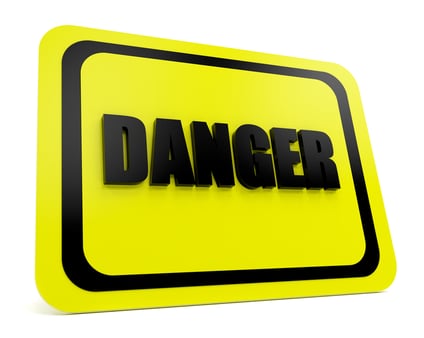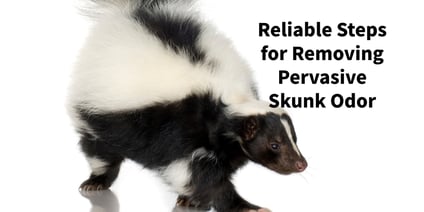Tear gas is not a single product but can refer to any of at least 15 different chemical compounds that irritate the mucous membranes and cause tearing, coughing, sneezing, pain, and temporary blindness. Most of these compounds have been developed in laboratories but they also include natural chemicals such as a sulfur compound found in onions. The most common types of tear gas used in the United States are designed CS, CR, and CN (also known by the brand name Mace).
Identifying the Differences Between CS, CN, and CR Tear Gases
The most common form of tear gas used by police is the CS variety. This takes its name from the initials of two researchers who develop the agent back in 1928. CS (and most varieties of tear gas) are not a gas at room temperature but a mixture of a volatile solvent and a solid. The solid is pulverized into a fine powder and aerosolized to produce a cloud of the chemical in the air which will then be inhaled contacting the nose, mouth, eyes, throat, and lungs of the person targeted. In some situations, an aerosol is produced by heating the CS with hot gases or by other means.
The CN variety is widely available and works very effectively at close range. However, it does not disperse into larger areas as rapidly as CS. It is dispersed along with an oil or solvent, causing it to stick to the skin or other areas of the body. CN requires a solvent booster to achieve the best results. If the cleaning product being used does not contain enough solvent, consider adding Citrus Solv or Pine Boost at 1 – 2 ounces per gallon of ready-to-use cleaning solution.
CR produces more powerful effects than CS, but it is less toxic from ingestion or dermal exposure. Despite this, CR is a possible carcinogen. For this reason, it is less widely used than the first two varieties of tear gas discussed. Like CS, CR is a solid at room temperature; it is a pale-yellow solid that is made into a fine powder, suspended in a propylene glycol-based liquid, and dispersed into the air. CR can stay active on surfaces for 2 months.

How to Clean Up After Tear Gas
Note that knowing the specific makeup of tear gas you are dealing with can help with the clean-up, but each can be treated in a similar manner.
- The need for protective gear (PPE) should be obvious. A full-face respirator is advised. Use a respirator for organic vapors along with a dust filter. Tear gas, especially the CR variety, can be irritating or painful on damp skin. Protect exposed skin with a hazard suit.
- During the entire clean-up operation and for several hours after, I suggest operating an air scrubber, HEPA air filter, or similar equipment with an OdorKlenz Air Cartridge. These cartridges were developed for use by the military during the gulf war to protect against chemical and biological weapons. This filter will keep the air clean and make the working environment friendlier, reduce contamination of cleaned areas due to particles carried by air currents, and serve as insurance against odors that could arise from particles that remain suspended in the air.
- Remove as much of the residue as possible by vacuuming. Because the powder is so fine, an ordinary vacuum will allow the dust to pass through the filters and redistribute it into the air. Therefore, use a ULPA or HEPA vacuum system.
A truckmount with Dust Downer in the vacuum line can also be used. Be sure that the vacuum hose extends outside the building with no air leaks. Gaps around cuffs or other breaks in the hose can result in tear gas getting into the environment you are trying to clean.
It is wise to make sure the truckmounts exhaust is directed away from people.
- Large volumes of water help to neutralize and flush out CS tear gas but they can make the effect of CR worse. Double-check your personal protective gear when you begin using water.
An alkaline prespray or hard surface cleaning solution that includes surfactants to aid in penetration is the basic cleaning solution for tear gas. I suggest Traffic Slam for the carpet, Avenge Heavy Duty for upholstery, and Hard Power for other surfaces. Because the tear gas usually includes solvents, a Citrus Solv or a Solvent Clean added to your cleaning solution aids when cleaning carpets, upholstery, and hard surfaces. Use plenty of water to flush thoroughly, in particular when dealing with CS.
Including sodium bisulfite (liquid) or adding sodium metabisulfite (Bridgepoint’s Coffee Stain Remover) to your alkaline clean solution improves the removal of CS. Several formulated coffee stain removers used in our industry contain sodium metabisulfite. Adding about a half ounce to each gallon of ready-to-use cleaning solution will likely be sufficient for most situations.
CAUTION! Sodium bisulfite is a reducing agent with a strong unpleasant odor. It has the potential to remove or lighten colors on some surfaces. Special precautions, including good ventilation, must be taken if using sodium bisulfite for more than spot removal situations.
- Contents may be moved outside and cleaned on a downdraft table or immersed in a water-based alkaline cleaning solution.
- Finish the job with ventilation and direct spray application of one of Bridgepoint’s premium deodorizers for severe odors. I suggest Fresh Lemon or Spice Air.
by Scott Warrington
Enjoyed reading this post? Read the following articles:



